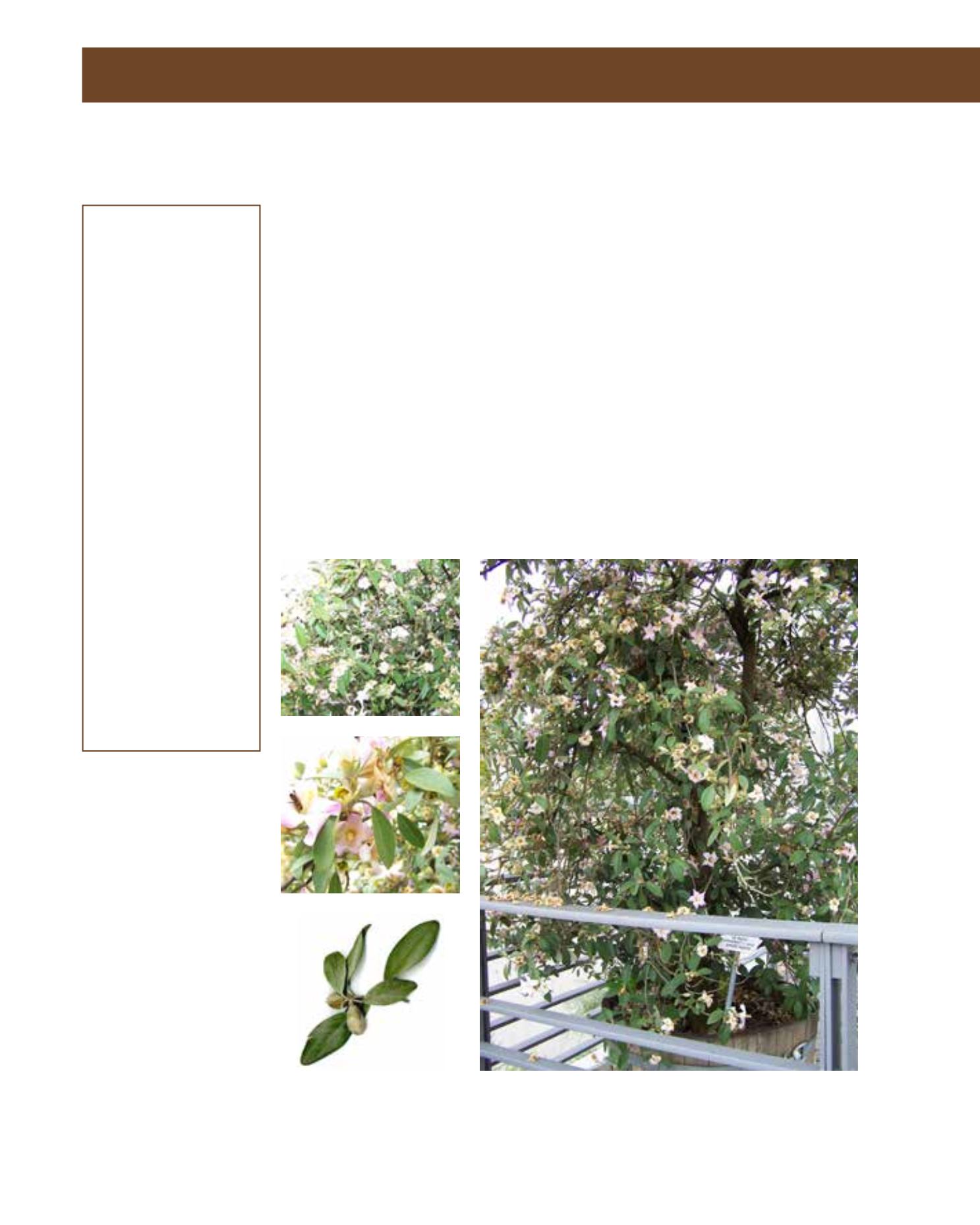

GENERAL
Origin
:
Mediterranean,
sub-tropical
Vigour
:
fairly fast
growing
Humidity
:
semi-arid, semi-
humid, very
humid, extremely
humid
Propagation :
sowing and
pricking out,
cuttings
Maintenance :
low
CONDITIONS
Dessication :
vulnerable
Stagnant water :
vulnerable
Irrigation
:
medium
Salinity/ppm :
moderate (3000
ppm)
Hardiness
:
-6°C
SHAPE
Type
:
tree
Height
:
6 m-15 m
Spread
:
4 m-9 m
Foliage
:
evergreen
FLOWER
Colour
:
pink, red, white
Size
:
5 cm - 7 cm
Period
:
May - July
FRUIT
Type of fruit :
schizocarp
Fruit size
:
3 cm
Cow Itch Trees occur wild in northern Australia, in the coastal regions of Queensland, New
South Wales and several islands. Hence, they tolerate very high salinity and wind as well as full
sun, heat and drought. An established tree in Wadi Hanifah was neglected for years and did well
without additional watering, even though it grew at the valley’s edge. Light frosts of up to –5°C
are tolerated except by young plants. They grow to a medium size of oval shape and about 10
metres in height, but may reach 15 metres under conditions similar to their native environment.
The leathery foliage is evergreen, entire and may reach 10 cm length. From late spring onwards,
there are many pink or mauve flowers about 5 to 7 cm across. These are reminiscent of hibiscus
flowers, since both belong to the mallow family (Malvaceae). The inflorescences are followed by
valved capsules including many round seeds, but also tiny stiff hairs that may irritate the skin. It
is therefore not a good choice in pedestrian areas, but Cow Itch Trees are excellent roadside trees
that form symmetrical pyramidal crowns without pruning. They are maintenance-free and will
tolerate any well-drained soil. In containers, they can grow into a shrub to some 3 metres high
and may form a screen or windbreak. They are multiplied by seeds or cuttings in spring. Laguna-
rias are rarely infested by pests or diseases.
179
Lagunaria patersonii,
Malvaceae
Cow-Itch Tree,
Norfolk Island Hibiscus, Primrose Tree, Pyramid Tree
















